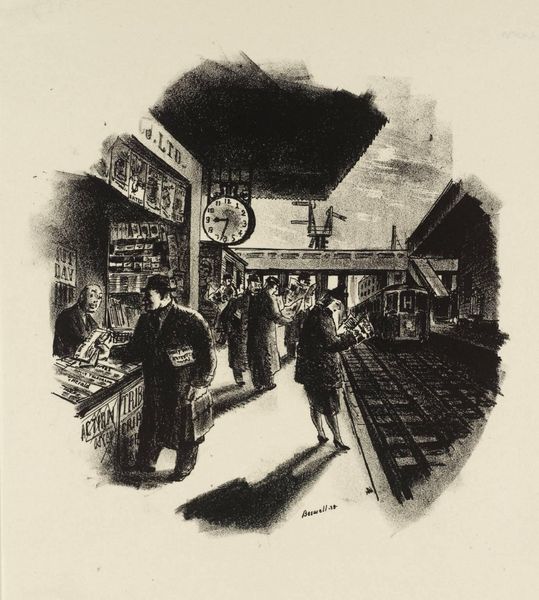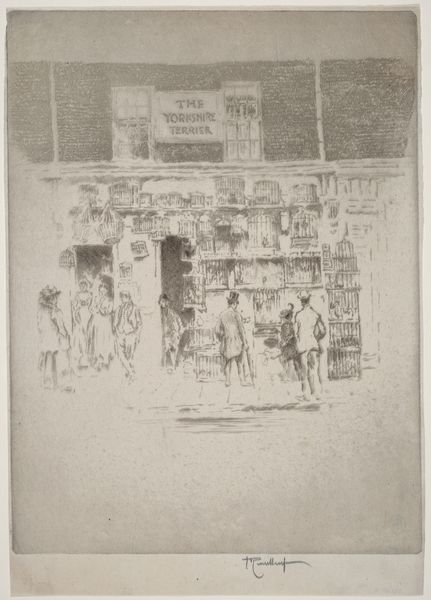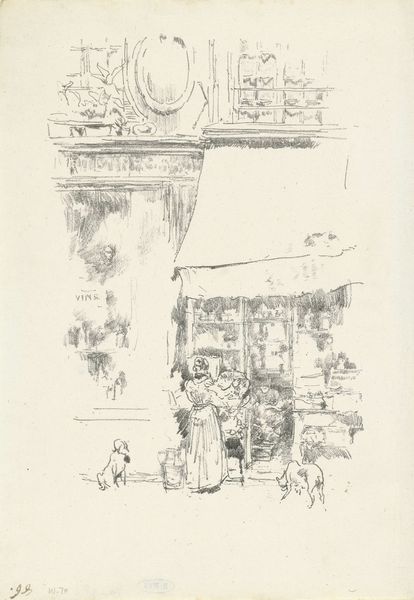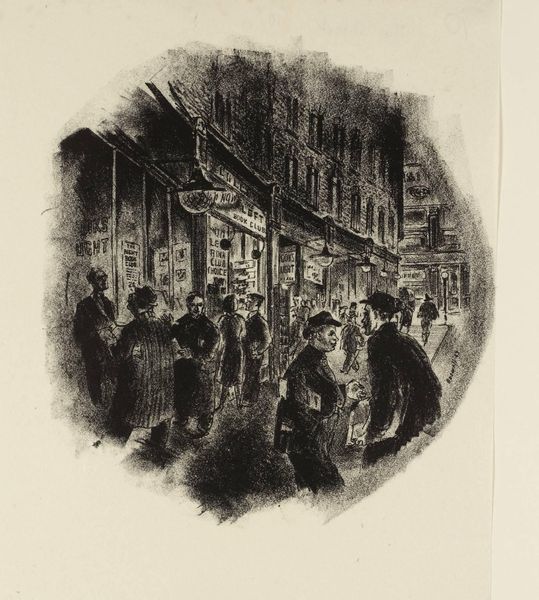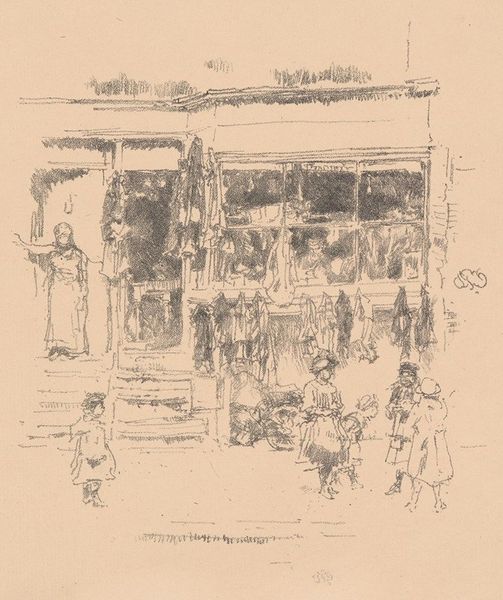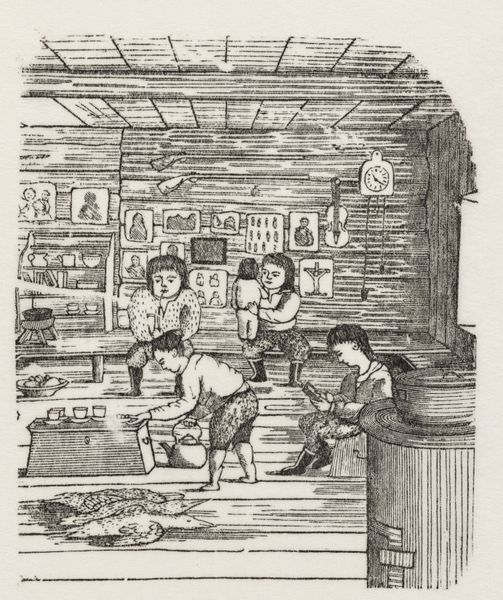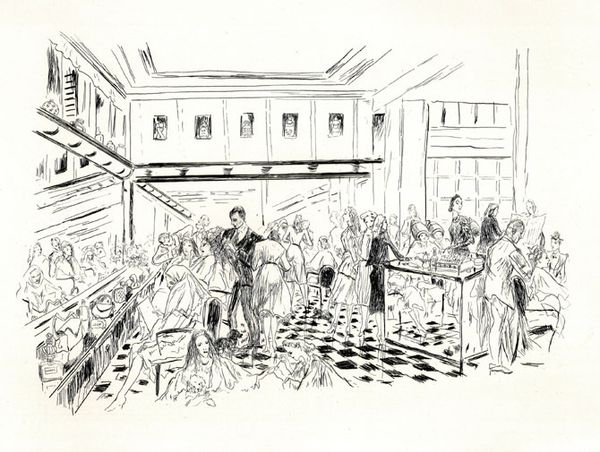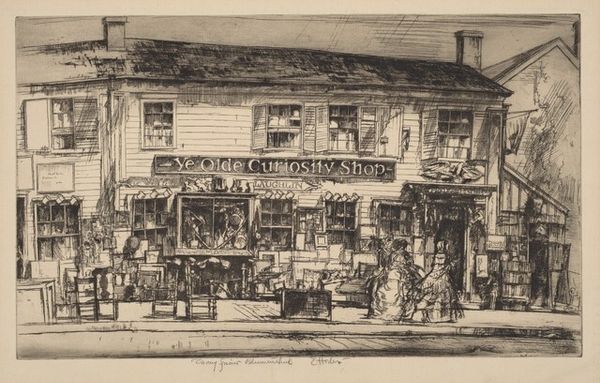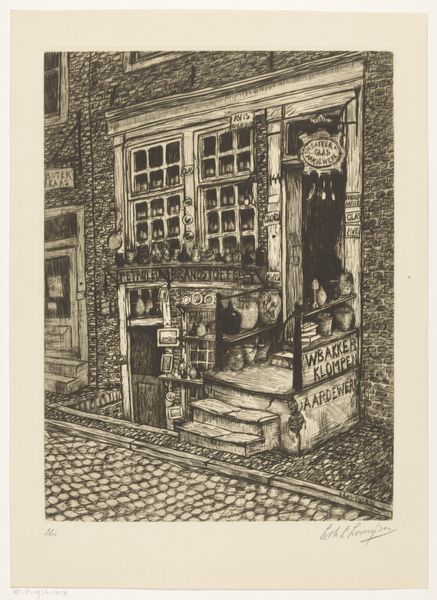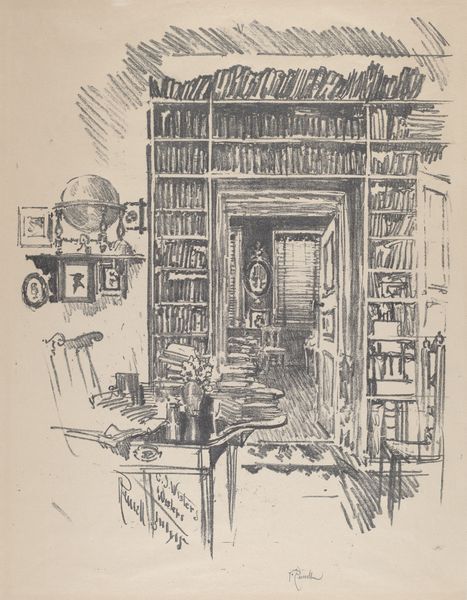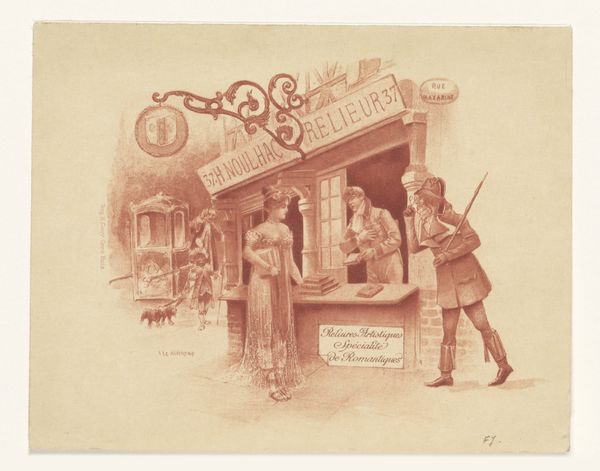
Dimensions: image: 483 x 410 mm
Copyright: © The estate of James Boswell | CC-BY-NC-ND 4.0 DEED, Photo: Tate
Editor: This is James Boswell’s "Parr’s Stores," currently residing in the Tate Collections. I'm drawn to the sheer volume of goods crammed into this shopfront. What strikes you about the means of production and consumption represented here? Curator: I see a direct engagement with the materiality of everyday life. Boswell's rendering emphasizes the abundance and variety of commodities available to consumers. Notice how the drawing highlights the intersection of advertising, labor, and the act of buying. Editor: It feels like a social commentary, reflecting the culture of the time. Curator: Precisely. Boswell isn't just depicting a shop; he's documenting the social and economic forces shaping daily experiences and examining the means of production available at the time. Editor: I never considered the labor aspect so explicitly. Thanks for sharing your perspective! Curator: It’s important to consider the social context and challenge traditional boundaries between high art and craft, always.
Comments
Join the conversation
Join millions of artists and users on Artera today and experience the ultimate creative platform.
tate 7 months ago
⋮
Shop fronts and signage were a recurrent theme in Boswell’s prints. This large image depicts the exterior of J. Parr’s Stores which is crowded with household items for sale including foodstuffs such as Oxo, Sylvan Flakes, Tate and Lyle sugar, Lux soap, and cocoa, clothing and other miscellaneous goods from pots and pans to dyes and cleaning products. The shop keeper stands at the entrance addressing a middle-aged woman who holds an empty canister which she presumably wants re-filling with one of the many types of oil for sale. In the foreground a school boy, wearing shorts and cap, gazes at a dog which looks curiously at the bill-boards outside the store. This print may have been published in the popular periodical Lilliput, of which Boswell was art editor until it ceased publication in 1952. He produced a series of pictures of Camden Town, where he was then living, for this magazine. Eric Hobsbawn remarked that Camden ‘isn’t as flamboyant as Stepney or Shoreditch, or as grim as Canning Town; it is just ordinary. That is why Boswell’s pictures show its people doing nothing specially Camden Townish, but simply the sort of things that are being done in scores of neighbourhoods in Inner London’ (quoted in James Boswell: Extracting the Dream Reality).
